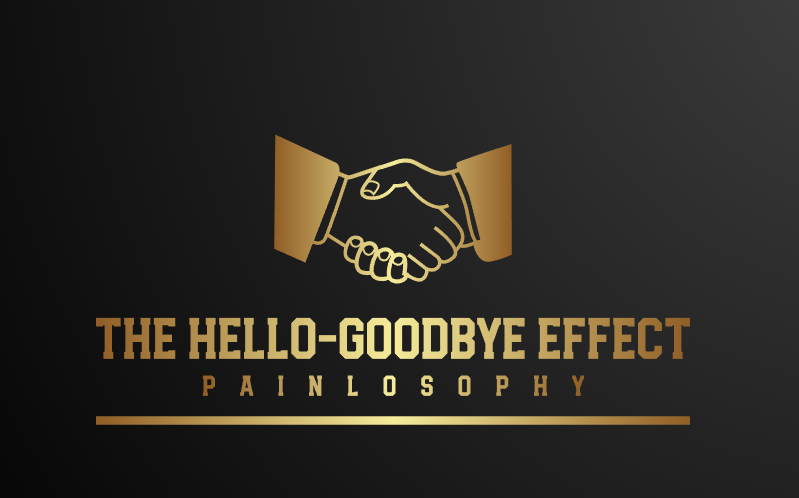
By: Drs. John Quintner and Milton Cohen
What is the Hello-Goodbye effect?
Assessing therapeutic effectiveness is always challenging, especially in pain medicine, whether in a clinical or research context. Among the many factors contributing to perceptions of change, as identified by Lilienfeld et al. [2014], are demand characteristics. These occur in situations “… when clients or research participants adjust their behaviour, including self-reported behaviour, in accord with what they believe to be the therapists’ or investigators’ hypotheses” [Orne 1962].
In 1948, Hathaway, a psychotherapist, described the propensity of his clients to portray themselves as being worse than they were at the beginning of treatment and to be better than they actually were at the conclusion of treatment. Hathaway called this the “hello-goodbye effect.”
In other words, patients may be motivated to tell their clinicians what they believe they want them to hear, including that they may have improved [Lilienfeld et al. 2014].
A similar phenomenon can arise in research settings whenever a subject is being assessed on two occasions, before and after an intervention [Everitt 1995]. Initially a subject may present to an experimenter in as bad a light as possible in order to impress upon them the seriousness of their problem with the hope of qualifying for the treatment. After the intervention has been carried out, the same subject may attempt to again impress the experimenter by making it appear that improvement has occurred when, in fact, there has been none.
What about in clinical settings when the evaluation of an intervention is carried out retrospectively in the context of an audit rather than a formal research project? Could the “hello-goodbye” effect be operating here? As an example, we will examine audits published by the proponents of “pain neuroscience education.”
Pain Neuroscience Education
In recent years, “pain neuroscience education” (PNE) has gained in popularity, being mainly driven by two Australian physiotherapists [Butler & Moseley 2013 & 2017].
Two recent publications have presented their “decade-long iterative process of exploring consumer perspectives on modern pain education concepts, to generate Key Learning Statements” [Leake et al. 2021 & 2022].
Essentially, these papers report post-treatment questionnaire responses from patients who described themselves as “improved” following sessions with the one therapist. Such patients constituted 83.5% of the cohort.
The earlier paper [Leake et al. 2021:2567] identified “core pain concepts that were valued by people with persistent pain who improved after a pain science education intervention.” They identified three themes:
(1) Pain does not mean my body is damaged,
(2) Thoughts, emotions, and experiences affect pain, and
(3) I can retrain my overprotective pain system.
The later paper [Leake et al. 2022:1197] reported modification of the Key Learning Statements that were “informed by consumer and expert clinician/researcher perspectives…” and which “… culminated as:
(1) Pain is a protective feeling
(2) Pain and tissue damage are poorly related
(3) When it comes to pain, everything matters
(4) When pain persists, it becomes overprotective
(5) I can retrain my pain system to be less protective
(6) Learning how pain works is an effective treatment
(7) Active strategies are better than passive strategies
(8) All pain is real no matter what is causing it.”
The question arises, what was the origin of the “11 predefined pain target concepts” [Leake et al. 2021:2559] to which the participants were asked to respond and which were subsequently refined to the above list? It seems clear from these papers that these concepts were developed, presented, and iterated by one and the same treating and educating clinician.
In fairness, the authors did acknowledge some limitations of these studies:
- “The target concepts … were not formally vetted by a wider sample of clinicians” [Leake et al. 2021:2567].
- “… the concepts represented in the themes of this study … reflect, at least in part, the concepts considered important by the educator” [Leake et al. 2021:2567].
- “… feedback at each of these stages is likely to be biased towards what the clinician included in their educational strategy” [Leake et al. 2022:1998].
- “… participants were able to move back through the survey and thus could have amended their open-ended responses after reviewing the list of pain concepts” [Leake et al. 2021:2567].
- “… current study design does not allow conclusions as to whether conceptual change or self-rated improvement was due to the education or other component of care …” [Leake et al. 2021:2567].
- “The demographic information we have shows an homogenous sample (well educated, access to the same treatment setting/clinician, and similar recovery outcomes). Therefore, the generalizability of these data are (sic) limited” [Leake et al. 2022:1999].
To summarise,
- the sole therapist determined the educational content of the treatment sessions
- only the views of patients who had improved were considered by the therapist
- the therapist was responsible for iterating the patient’s responses into the “8 Key Learning Statements Version 4.”
It, therefore, comes as no surprise that such participants simply fed back views that were in line with those of the therapist-educator. Despite the caveats listed above, the subtle implication is that they attributed their improved condition to the adoption of the therapist-educator’s views about pain.
So how, then, do these reports reflect anything other than the “hello-goodbye” effect as an example of responding to demand characteristics of a foreshadowed retrospective study? Furthermore, do these reports lend any veracity to the Key Learning Statements themselves?
Uncritical acceptance of these reports
Two publications [Wand et al., 2023; Ryan et al., 2024] in praise of these papers by Leake et al. notably fail to mention two “red flags” concerning any inferences that might be made:
- No firm conclusions can be drawn as to the efficacy (or otherwise) of the PNE program.
- The learning objectives (target concepts) had not been vetted by a wider sample of clinicians.
Both these more recent papers reassert that the “target concepts” (or learning objectives) of PNE were based on “contemporary pain science” as derived from the unchallenged opinions of Moseley & Butler [2017] and had been “iteratively derived with insights from health care professionals, scientists, and individuals currently or previously challenged by persistent pain” [Ryan et al. 2024:905].
These claims are made despite the caveats listed above by Leake et al. [2021 & 2022]. It is also noted that the therapist-educator on whose body of work the Leake et al. papers are based is the last author in the papers by Wand et al. [2023] and Ryan et al. [2024].
Conclusion
Irrespective of the veracity or otherwise of the eight “Key Learning Statements” put forward by this group, what do the two reports of Leake et al. actually tell us?
We suggest that this is an example of the “hello-goodbye” effect, in response to subtle demand characteristics on patients of one therapist reflecting on novel teachings of that therapist who in turn was solely responsible for their iteration.
The reports cannot be taken as an endorsement of therapeutic efficacy let alone to be of sufficient truth-value to form the basis of “… factsheets for use in community and health professional-targeted pain education initiatives,” as claimed by Leake et al. [2022:1999] if not also by others.
Acknowledgment: We are very grateful to our dear friend Brian Griffiths, retired educational psychologist, for bringing the “hello-goodbye” effect to our attention.
References:
Butler DS, Moseley GL. Explain Pain. Adelaide: Noigroup Publications, 2013,
Everitt B. The Cambridge Dictionary of Statistics in the Medical Sciences. Cambridge, New York: Cambridge University Press, 1995: 116.
Moseley GL, Butler D. Explain Pain Supercharged: The Clinician’s Manual. Noigroup Publications, 2017.

